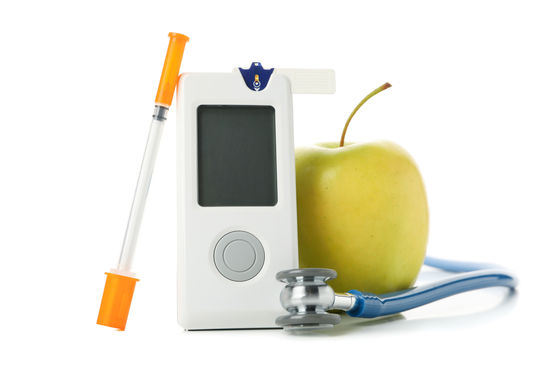What is 'type 1.5 diabetes', the little-known intermediate between type 1 and type 2 diabetes?

Diabetes is generally divided into two types: 'Type 1 diabetes,' which occurs when the body's immune system destroys healthy cells, and 'Type 2 diabetes,' which is mainly caused by overeating and lack of exercise. An expert explains 'Type 1.5 diabetes,' another type of diabetes that is often misdiagnosed by medical institutions due to low awareness and understanding in society.
What is type 1.5 diabetes? It's a bit like type 1 and a bit like type 2 – but it's often misdiagnosed
According to Emily Birch of Southern Cross University in Australia and Lauren Ball of the University of Queensland, there are actually more than 10 types of diabetes if classified in detail based on the mechanism of onset and causes, but the most common classification is type 1 and type 2 diabetes.
◆Differences between Type 1 and Type 2
Type 1 diabetes is an autoimmune disease that mostly affects children and young adults, in which the immune system destroys the pancreatic cells that make the hormone insulin. In type 1 diabetes, the body produces little or no insulin, so people with type 1 diabetes need to take insulin every day.

On the other hand, type 2 diabetes is caused by insulin resistance, which reduces the body's response to insulin and makes it impossible for the pancreas to produce enough insulin to overcome this. Most cases are seen in adults, but in recent years, there has been an increase in younger and child patients.
Type 2 diabetes differs from type 1 diabetes in that a certain amount of insulin is still secreted after the onset of the disease, and treatment involves changes to diet and physical exercise, oral medications, and insulin preparations.
◆What is type 1.5 diabetes?
The official name of type 1.5 diabetes is 'latent autoimmune diabetes in adults (LADA),' and the main cause is the immune system attacking insulin-producing cells, just like type 1 diabetes. However, type 1.5 diabetes progresses more slowly than type 1 diabetes, so insulin is often not needed right away.
A well-known example of type 1.5 diabetes is
Pop singer and former NSYNC member #LanceBass has type 1.5 #diabetes . Here's what you need to know about the disease from @ObiciMd at Stony Brook Medicine. @FoxNews @AmyMcGorry @sbudeptofmed @IntDiabetesFed @alldiabetesnews https://t.co/M6AIleyAR2
— Kali Chan (@KaliChanNews) August 21, 2024
While most people with type 1 diabetes require insulin from the time of diagnosis, most people with type 1.5 diabetes require insulin within five years. In addition, because the disease progresses slowly, many people are not diagnosed until they are 30 years of age or older, which is later than the average age for type 1 diabetes but earlier than the average age for type 2 diabetes.
It also shares characteristics of both types 1 and 2, with the same genetic and autoimmune risk factors as people with type 1 diabetes, and there is evidence that it may be influenced by lifestyle factors common to people with type 2 diabetes, such as obesity and physical inactivity.
◆ Symptoms and treatment of type 1.5 diabetes
Symptoms of type 1.5 diabetes vary greatly from person to person, with some people experiencing no symptoms at all. Common symptoms include increased thirst, frequent urination, fatigue, blurred vision, and unintended weight loss.
In many cases, people with type 1.5 diabetes are initially prescribed oral medications to keep their blood sugar levels in the normal range, and depending on their blood sugar control and the medications they are using, they may need to monitor their blood sugar levels regularly throughout the day.
If the average blood glucose level exceeds the normal range even with oral medication, the patient may be switched to insulin treatment. However, the current situation is that control strategies and treatment methods for type 1.5 diabetes have not yet been established.

The problem of misdiagnosis
Bass was initially diagnosed with type 2 diabetes but was later found to have type 1.5 diabetes, which is not uncommon - it's estimated that 5-10% of people with type 1.5 diabetes are misdiagnosed as type 2.
Type 1.5 diabetes is difficult to diagnose for a few reasons. First, to accurately diagnose type 1.5 diabetes and distinguish it from other types of diabetes, a special antibody test is required to detect autoimmune markers in a blood sample. However, not all medical professionals are willing to perform this test due to cost concerns or a lack of awareness that it is necessary in the first place.
In addition, because type 1.5 diabetes is common in adults, many doctors assume that this age group has developed type 2 diabetes, which is more common in this age group. It is not uncommon for people with early type 1.5 diabetes to have sufficient insulin secretion. Additionally, the symptoms of type 1.5 and type 2 diabetes are similar, which increases the risk of misdiagnosis.

◆There is still much we don't know about type 1.5 diabetes
In 2023, it is estimated that people with type 1.5 diabetes will account for 8.9% of all diabetes patients, a similar proportion to type 1 diabetes, but there is not enough research yet to give a more accurate figure.
As a result, awareness of type 1.5 diabetes is low, the diagnostic criteria are vague, and social understanding is not advanced. If a person with type 1.5 diabetes is misdiagnosed as having type 2 diabetes, they may delay receiving necessary treatment, which could lead to a deterioration in their health and the risk of developing complications.
The experts said, 'Receiving a correct diagnosis not only leads to optimal treatment and reduces the suffering of diabetes, but is also important in reducing unnecessary expenses. If you are experiencing symptoms that could be diabetes or have concerns about your existing diagnosis, please monitor your symptoms and consult your doctor.'
Related Posts:
in Science, Posted by log1l_ks







